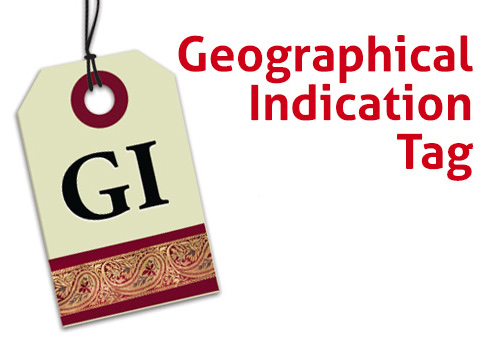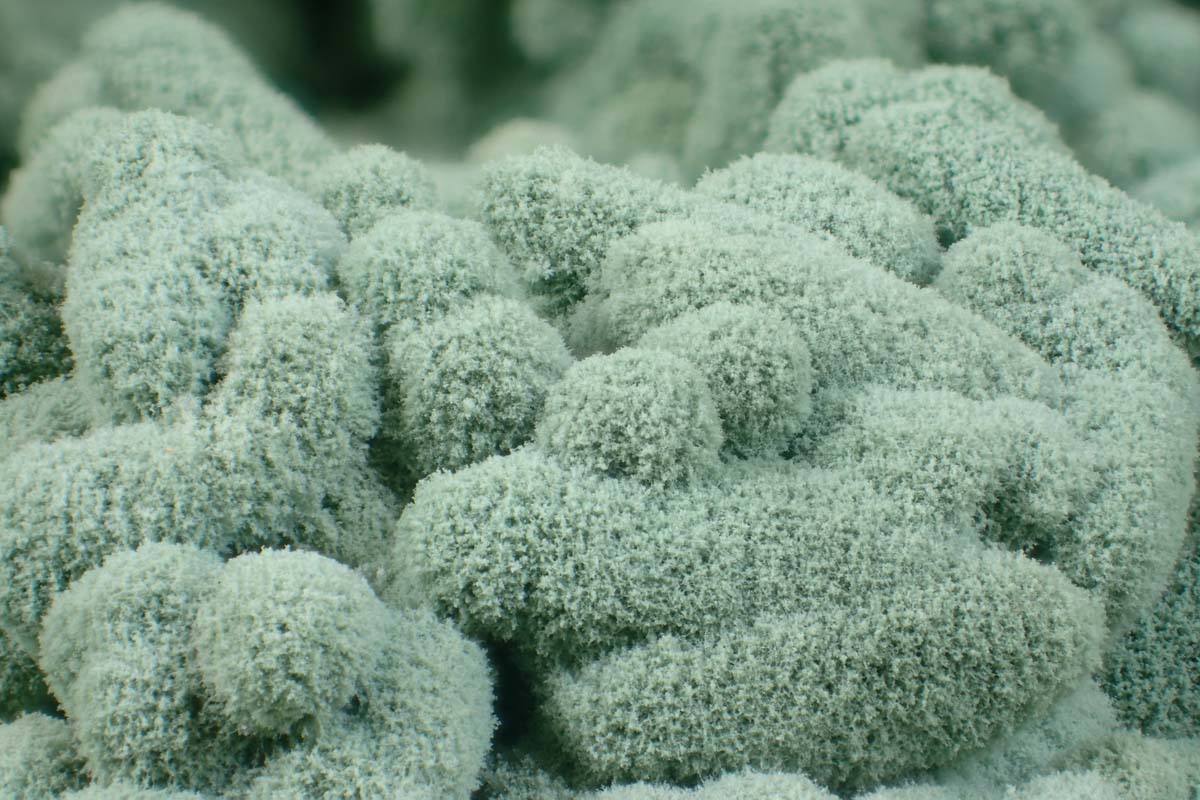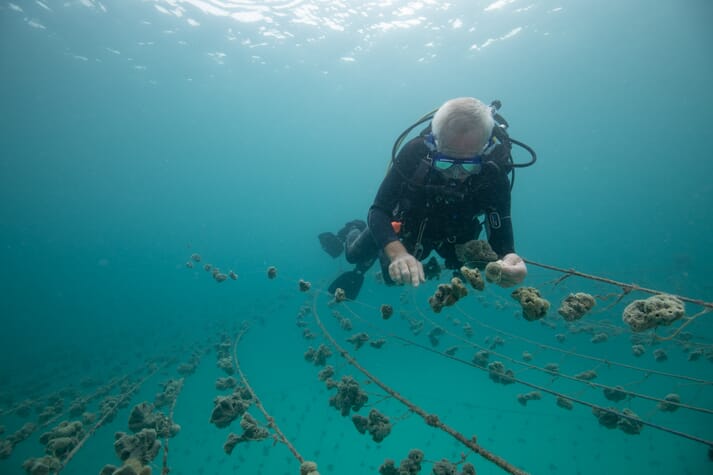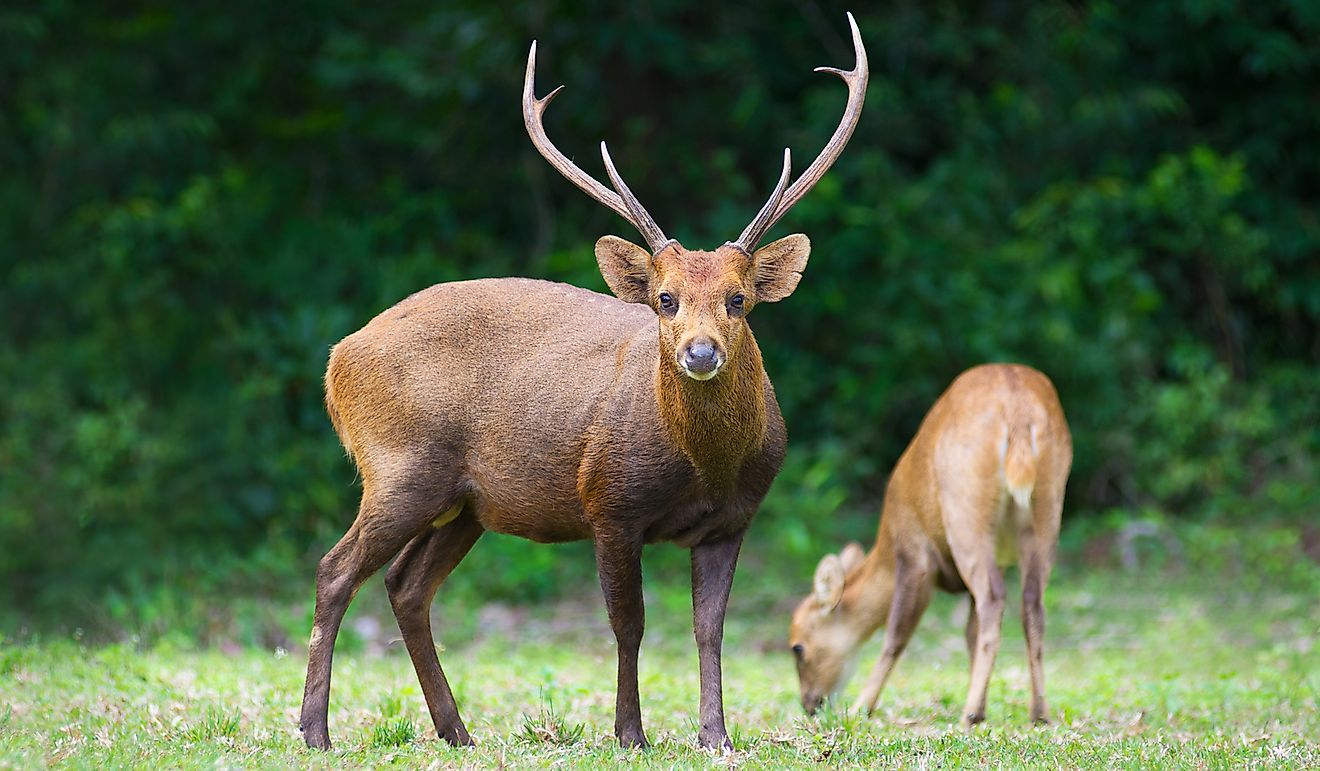
About Geographical Indication (GI) Tag:
- It is a sign used on products that have a specific geographical origin and possess qualities or a reputation that are due to that origin.
- This is typically used for agricultural products, foodstuffs, wine and spirit drinks, handicrafts and industrial products.
- The Geographical Indications of Goods (Registration and Protection) Act, 1999 seeks to provide for the registration and better protection of geographical indications relating to goods in India.
- This GI tag is valid for 10 years following which it can be renewed.
Key facts about newly GI Tagged products
- Kapdaganda Shawl
- It is woven and embroidered by the women of the Dongria Kondh tribe, a particularly vulnerable tribal group (PVTG) in the Niyamgiri hills in Odisha’s Rayagada and Kalahandi districts.
- The shawl reflects the rich tribal heritage of the Dongria Kondhs.
- The shawl is worn by both men and women and the Dongrias give it to their family members as a token of love and affection.
- Lanjia Saurpa Painting
- It is one of the oldest tribal art forms, is also known as Idital.
- The artworks are famous for their beauty, aesthetics, ritualistic association and iconography.
- It belongs to the Lanjia Saura community, a PVTG largely residing in the Rayagada district. These paintings are in the form of exterior murals painted on the mud walls of homes.
- Koraput Kala Jeera Rice
- The black-coloured rice variety, also known as the ‘Prince of Rice’, is famous for its aroma, taste, texture and nutritional value.
- As the rice grains resemble cumin seeds, it is also called Kala Jeera.
- Its consumption helps in increasing haemoglobin levels and improves metabolism in the body.
- Nayagarh Kanteimundi Brinjal
- It is known for its prickly thorns on the stems and the whole plant.
- The green and round fruits contain more seeds as compared to other genotypes.
- It is famous for its unique taste and relatively short quick cooking time.
- The plants are resistant to major insects and can be grown with minimal pesticide.
- Odisha Khajuri Guda (Jaggery)
- It is a natural sweetener extracted from date palm trees and has its origin in the Gajapati district.
- Traditionally, the jaggery is prepared in a trapezoidal form called ‘Patali Gur’ and is organic by nature. It is dark brown and has a unique taste.
- Dhenkanal Magji
- It is a type of sweet made from cheese from buffalo milk, with distinct characteristics in terms of appearance, taste, flavour, shape, and size.
2. Trichoderma

About Trichoderma:
- The formulation named ‘Tricholime’, integrates Trichoderma and lime into a single product, making the application easier for farmers.
- Trichoderma is a fungal biocontrol agent, has proven effective in suppressing several soil-borne plant pathogens and serves as a successful bio-pesticide and bio-fertilizer in crop production.
- Recognizing the importance of Trichoderma and the challenges posed by traditional lime applications, the scientists at IISR developed ‘Tricholime’ to integrate lime and Trichoderma.
Significance of Tricholime
- It can successfully eliminate the need for a time-consuming two-step process.
- This lime-based formulation neutralises the soil acidity while promoting plant growth and shields crops from soil-borne pathogens, all in a single application.
- This formulation also benefits the crop by improving the physical condition of the soil, enhancing secondary nutrient availability and by boosting soil microbial activity, he added.
- IISR hopes that the technology behind this product can also be extended to include other beneficial bio-agents, opening new possibilities in product development to support sustainable organic farming.
3. What is iDEX (Innovations for Defence Excellence)?

About iDEX:
- It is the flagship scheme of the Ministry of Defence, Govt of India launched in 2018.
- The objective of the scheme is to cultivate an innovation ecosystem in the Defence and Aerospace sector by collaborating with startups, innovators, MSMEs, incubators, and academia.
- iDEX offers grants and support for R&D with significant potential for future adoption in Indian defence and aerospace.
- It is currently engaged with around 400+ Startups and MSMEs.
- It is recognized as a game-changer in the defence ecosystem, iDEX has received the PM Award for Innovation in the defence sector.
- Funding: It will be funded and managed by a ‘Defence Innovation Organization (DIO)’ which has been formed as a ‘not for profit’ company as per the Companies Act 2013 for this purpose, by the two founder memberse. Defence Public Sector Undertakings (DPSUs) - HAL & BEL.
- iDEX will function as the executive arm of DIO, carrying out all the required activities while DIO will provide high level policy guidance to iDEX.
4. Sponge farming

About Sponge farming:
- Sponge farming is a relatively new business opportunity that does not harm the marine environment.
- A sponge is a living animal which is made of loosely arranged cells that surround a skeleton of fibres.
- The specialised cells nestled within thousands of tiny chambers act as microscopic pumps, and tirelessly drawing water into the sponge’s body with their whip-like tails.
- Sponges provide homes for many other animals, plants, and microorganisms. In many cases, they all work together in a mutual symbiotic relationship.
- Sea sponges exist in all oceans around the world and make up 20% of the global silicon biological sink.
- This unique pumping mechanism, which helps sponges extract nutrition and oxygen, also purifies the ocean water by removing impurities, including sewage.
- Uniqueness: Sponges, unlike seaweed, possess remarkable resilience to climate change, require minimal maintenance, and command premium market prices.
- Reproduction: Most sponges are hermaphrodites, harbouring both male and female reproductive organs, enabling them to self-propagate effortlessly.
- New sponges emerge from small buds that detach from the parent sponge and begin independent growth. Even damaged or fragmented sponges can regenerate into new individuals.
- This remarkable regenerative ability underpins the ease and feasibility of commercial sponge farming.
- Uses:
- These sponges are used for bathing and general hygiene because they are naturally antibacterial and antifungal and can resist odours.
- Research has also shown that the spongy creatures play an important role themselves in combating climate change.
- Their skeletons break down into microscopic pieces of silicon, which helps control the carbon cycle in the ocean and reduces the greenhouse effect.
- Dissolved silicon is critical for the growth of diatoms, tiny organisms which absorb large amounts of CO2 in the ocean using photosynthesis.
Source : Saved by sponge

About Hog deer:
- It is a solitary creature but sometimes spotted feeding in small groups in open fields when food there is plentiful.
- For the most part it is sedentary and does not migrate.
- Males tend to be territorial and mark their territory with glandular secretions.
- This species exhibits sexual dimorphism. The females are slightly smaller than males and lack antlers.
- Distribution
- It has a native geographic range throughout India, including the Himalayan foothills and Southeast Asia.
- Humans have introduced free-ranging populations of this deer in Sri Lanka, Australia and the United States, including Texas, Florida, and Hawaii.
- Habitat:
- It appears to prefer dense forests; however, they are often observed in clearings, grasslands and occasionally wet grasslands.
- This variation is usually associated with time of year and food distribution.
- Conservation status
- IUCN: Endangered
- Wildlife Protection Act 1972: Scheduled I
Key facts about the Rajaji Tiger Reserve
- It is spread over three districts of Uttarakhand: Haridwar, Dehradun and Pauri Garhwal.
- It is situated along the hills and foothills of the Shiwalik ranges.
- In the year 1983, Rajaji Wildlife Sanctuary was merged with Motichur and Chilla wildlife sanctuaries and made into Rajaji National Park.
- It was named after the famous freedom fighter Rajgopalachari popularly known as "Rajaji"
- It's location in a transition zone between temperate western Himalaya and central Himalaya enhances the species diversity.
- Vegetation: The area is covered with diverse forest types ranging from semi-evergreen to deciduous and from mixed broad-leaved to Terai grassland and has been classified as Indus-Ganges Monsoon Forest type.
- Flora: Rohini, Palash, Shisham, Sal, Sandan, Khair, Arjun, Baans, Semul, Chamaror etc.
- Fauna: Tiger and Asian Elephants. Leopard, Jungle cat and Himalayan Black Bear etc.
Source : In a first, hog deer spotted inside Rajaji Tiger Reserve

About Gokturks:
- The Göktürks were a nomadic confederation of Turkic peoples who lived in ancient Inner Asia and the steppes of Central Asia.
- They emerged into history in the early sixth century AD from obscure tribal origins.
- The Göktürk rulers originated from the Ashina tribe, an Altaic people who lived in the northern corner of the area presently called Xinjiang.
- The Göktürks, under the leadership of Bumin Khan (d. 552) and his sons, succeeded the Xiongnu as the main Turkic power in the region and took hold of the lucrative Silk Road trade during the sixth century.
- Under their leadership, the Göktürks rapidly expanded to rule huge territories in north-western China, North Asia, and Eastern Europe(as far west as the Crimea). At their height, the Gokturks controlled a vast area stretching from Eastern Europe all the way across northern China.
- They were the first Turkic tribe known to use the name "Turk" as a political name.
- Their religion, Tengriism, a form of shamanism centred on a celestial deity, Tengrii, includes elements which resemble concepts of Confucian and Hindu thought.
- From 552 to 745, Göktürk leadership bound the nomadic Turkic tribes together into an empire, which eventually collapsed due to a series of dynastic conflicts.

About the Taurus Missile:
- Taurus KEPD 350, known as the 'bunker buster', is a Swedish-Germanlong-range air-to-surface cruise missile.
- The high-precision stand-off guided missile system can penetrate through dense air defence systems and destroy hard and deeply buried stationary and semi-stationary military targets on the ground.
- The missile attacks target bridges, ships in ports, runways, command, control and control centres, bunkers, port facilities, and air base buildings.
- It is in service with the German (Luftwaffe) and Spanish Air Forces.
Source : Germany Under Increasing Pressure To Send Taurus Missiles to Ukraine

About Dynamic Asset Allocation:
- DAA is an investment strategy that involves the frequent adjustment of the weights in a portfolio based on the overall market performance or the performance of certain securities.
- Most of the funds in this category are invested and spread across various sectors, including equity funds, real estate, stocks, and bonds.
- Under the dynamic allocation strategy, a portfolio manager assesses the current market conditions and the performance of each asset class.
- He uses the results of the assessment to reduce the weights of assets with bad performance and increase the weights of assets with strong performance.
- Generally, a dynamic strategy is used in reaction to existing risks and market downturns.
- Unlike the strategic asset allocation strategy, dynamic asset allocation does not involve a target mix of assets. Thus, portfolio managers enjoy a high degree of flexibility in their choice of investments.
- Dynamic allocation requires active portfolio management. Therefore, the success of the strategy depends not only on the market conditions but also on the portfolio manager’s ability to make good investment decisions and to adequately respond to changes in the market.
- Dynamic Asset Allocation Example:
- Suppose global equities enter a six-month bear market.
- An investment manager using dynamic asset allocation may decide to reduce a portfolio’s equity holdings and increase its fixed-interest assets to reduce risk.
- For example, if the portfolio was initially equities heavy, the manager may sell some of its equity holdings and purchase bonds.
- If economic conditions improve, the manager may increase the portfolio’s equity allocation to take advantage of a more bullish outlook for stocks.
- Advantages:
- Returns: The frequent adjustments in the mix of assets can possibly provide higher returns on the investment portfolio.
- Adjustment to market changes: Unlike static asset allocation, dynamic allocation is highly flexible. The strategy can quickly respond to market changes and market risks.
- Disadvantages:
- Transaction costs: The frequent rebalancing the weights within the portfolio is associated with transaction costs.
- Active management: It requires tight control of the investment portfolio and constant observation of emerging market trends. Therefore, the asset allocation strategy requires the skills and knowledge of a professional portfolio manager and may often demand extensive sources (e.g., employees for research).
Source : PPFAS Mutual Fund applies for dynamic asset allocation scheme with SEBI

About Lunar Gateway Station:
- It is a primary component of NASA's Artemis program.
- Artemis intends to establish a long-term base on the Moon (Artemis base), and the Lunar Gateway will serve as a multi-purpose outpost that orbits the Moon.
- The Gateway is a multinational project involving four of the International Space Station partner agencies: NASA, the European Space Agency (ESA), Japan’s Aerospace Exploration Agency (JAXA), and the Canadian Space Agency (CSA).
- Basically, the Gateway Station is similar to the International Space Station currently in low Earth orbit, but the Gateway will orbit the Moon.
- Incidentally, the Gateway will be the first space station ever to exist outside of low Earth orbit, or LEO.
- From the Gateway, NASA and international partners can provide essential support for long-term human presence on the lunar surface, as well as launch additional missions for deep space exploration.
- Its flight path is a highly elliptical orbit, bringing it both relatively close to the Moon’s surface and also far away, making it easier to pick up astronauts and supplies from Earth, around a five-day trip.
- It will also offer a place to relay communications and act as a base for scientific research.
- The Gateway will weigh around 40 tonnes and consist of a service module, a communications module, a connecting module, an airlock for spacewalks, a place for the astronauts to live, and an operations station to command the Gateway’s robotic arm or rovers on the Moon.
- Astronauts will be able to occupy it for up to 90 days at a time, occasionally travelling to the lunar surface to conduct science and test new technologies.
Source : UAE announces its participation in Nasa’s Lunar Gateway Station

About Timorebestia koprii:
- Timorebestia koprii, meaning ‘terror beasts’, is a species of carnivorous worm, one of the earliest carnivorous animals to have colonised the water column during the early Cambrian period (541 million to 485.4 million years ago).
- The fossils were discovered from the Early Cambrian Sirius Passet fossil locality in North Greenland.
- They were giants of their day and would have been close to the top of the food chain. That makes it equivalent in importance to some of the top carnivores in modern oceans, such as sharks and seals back in the Cambrian period.
- Timorebestia is a distant but close relative of a living group of tiny marine worms known as arrow worms, or chaetognaths. These are much smaller ocean predators today that feed on tiny zooplankton.


























































































































































.png)
.png)
.png)
.png)
.png)


.png)
.png)
.png)





.png)
.png)






.png)
.png)
.png)
.png)
.png)
.png)
.png)
.png)
.png)

.png)







.png)
.png)


.png)
.png)
.png)


.png)

.png)
.png)





.jpg)

.png)
.png)


.png)

.png)
.png)
.png)

.jpg)

.jpg)


.png)

.png)
.png)
.png)
.png)
.png)
.png)
.png)
.png)
.png)
.png)




.png)

.png)





.png)
.png)
.png)
.png)
.png)
.png)
.png)
.png)
.png)
.png)
.jpg)
.jpg)

.png)
.png)
.png)
.png)
.png)
.png)
.png)
.png)
.png)
.png)
.png)
.png)
.png)
.png)
.png)
.png)
.png)
.png)
.png)
.png)
.png)
.png)



.png)
.png)

.jpg)
.jpg)


.jpg)
.jpg)
.jpg)
.jpg)
.jpg)

.jpg)








.jpg)
.jpg)
.jpg)
.jpg)
.jpg)

















.jpg)
.jpg)







.jpg)


















.jpg)
.jpg)






























































































.jpg)
.jpg)


























.jpg)

.jpg)










.jpg)








.jpg)




.jpg)










.jpg)


















.jpg)












































.jpg)














.jpg)
.jpg)
.jpg)





.jpg)

.jpg)
.jpg)





































































.jpg)


































.jpg)
.jpg)
















































.jpg)












.jpg)


.jpg)




.jpg)
.jpg)
.jpg)

.jpg)
.jpg)
.jpg)
.jpg)

.jpg)
.jpg)
.jpg)

.jpg)
.jpg)
.jpg)
.jpg)
.jpg)
.jpg)
.jpg)
.jpg)

.jpg)


.jpg)
.jpg)
.jpg)
.jpg)
.jpg)
.jpg)
.jpg)
.jpg)
.jpg)
.jpg)











.jpg)
.jpg)





.jpg)
.jpg)
.jpg)
























.jpg)
























.jpg)









.jpg)
.jpg)







.jpg)
.jpg)









































.jpg)
.jpg)
.jpg)
.jpg)
.jpg)

.jpg)
.jpg)
.jpg)
.jpg)
.jpg)


.jpg)
.jpg)
.jpg)
.jpg)
.jpg)

.jpg)
.jpg)
.jpg)
.jpg)
.jpg)
.jpg)
.jpg)
.jpg)
.jpg)
.jpg)
.png)

.png)
.png)

.png)
.png)
.png)
.png)


.jpg)
.jpg)

.jpg)
.jpg)
.jpg)

.png)
.png)
.png)
.png)
.png)
.png)
.png)

.png)
.png)
.png)
.png)
.png)
.png)
.png)
.png)
.png)
.png)





































































-min.png)



.png)




.png)








































